PHOTOS: The Sun Shines Again On Bogoviceva, City Centre Zagreb
November 22, 2020 – One of the most iconic modern monuments of city centre Zagreb, Ivan Kožarić's Grounded Sun, has returned to Bogoviceva following eight months of restoration. We visited to bask in its brilliant glow
Grand remnants of the Austro-Hungarian empire surround on both sides of Bogoviceva, lower town Zagreb. These buildings are several storeys high. This is the heart of the city. At this time of year, the sun doesn't even pass directly overhead at midday. That Bogoviceva lies in shadow for most of autumn's days does not halt the effervescence of life on the street. This is the edge of the promenade for Špica - the beloved Zagreb ritual of coming to this particular stretch, looking at your best, for coffee, while taking in everyone else looking at their best.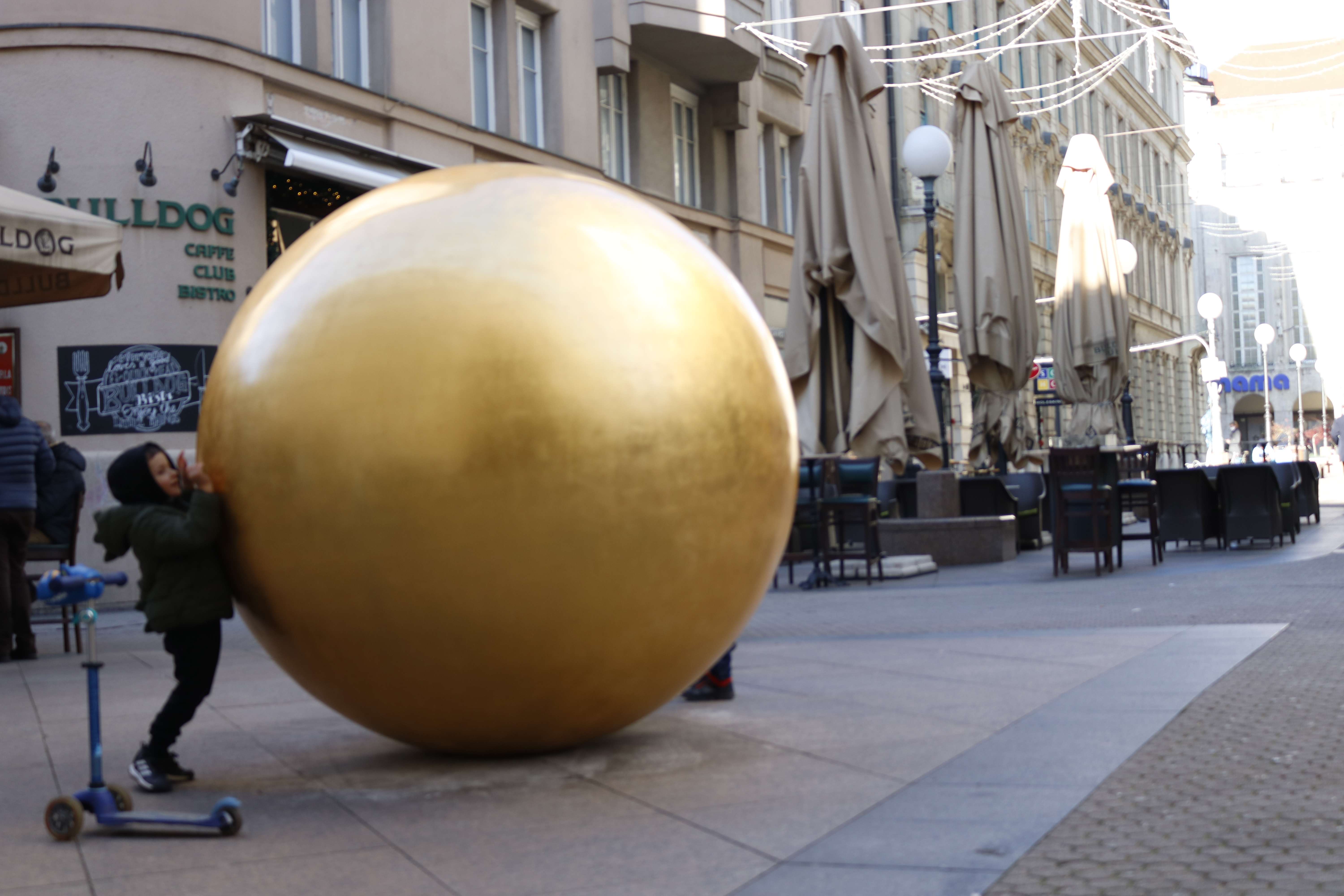
Following several weeks of cloudy skies overhead, the boldest blue has blessed Zagreb for all of this late November weekend. In daylight hours, the strong rays banish the chill of the air for those sat in cafes on open squares or in the upper town. On shaded Bogoviceva, we have to rely on the rays of an artificial sun to bring brilliance to the street.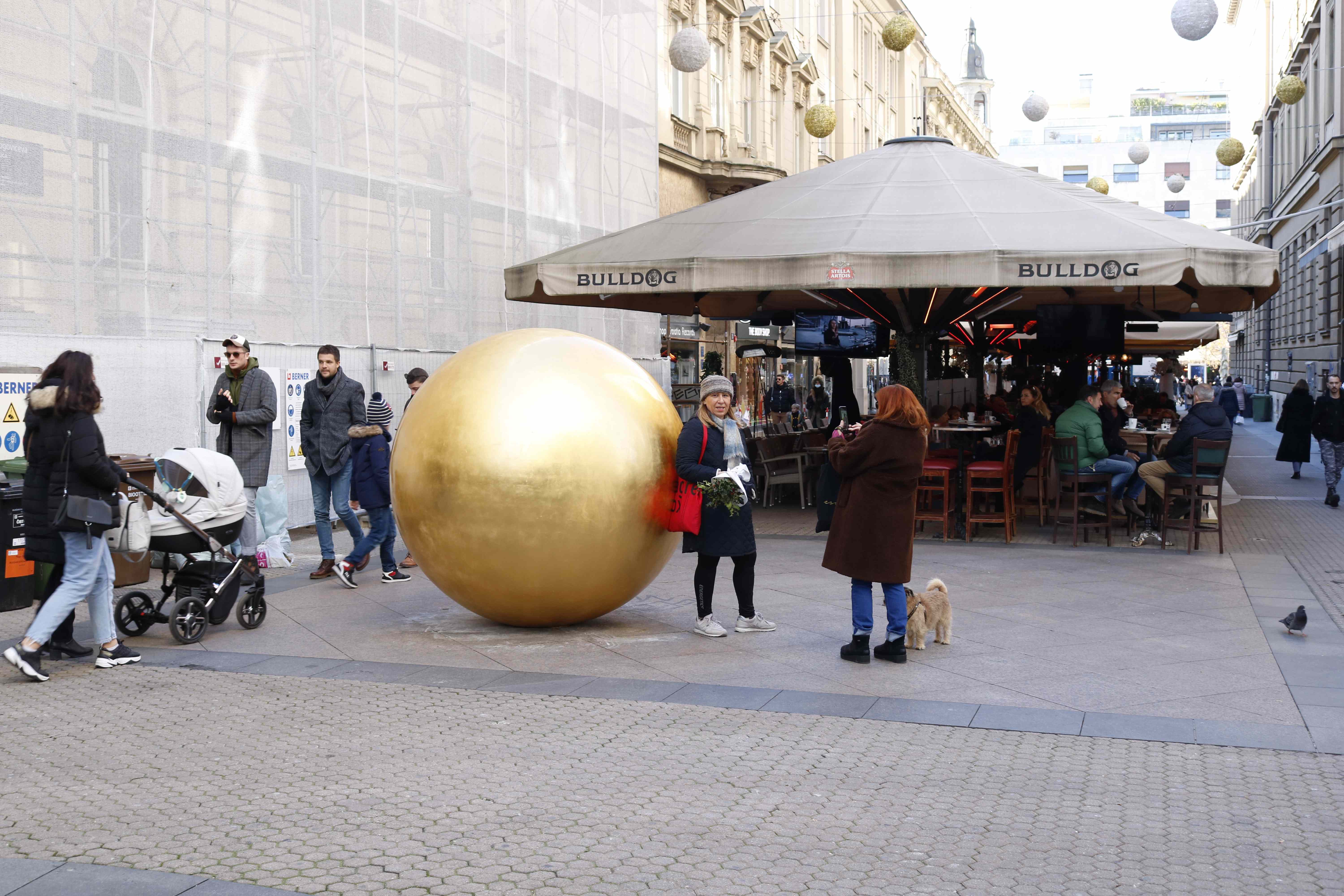
Following an absence of eight months, that brilliance shines once again on Bogoviceva with the return of Ivan Kožarić's Grounded Sun monument. Removed immediately after the 2020 Zagreb earthquake (for fear that masonry would fall on it), its leave was extended in order that it be restored. One of the most iconic monuments in downtown Zagreb, it is admired by all city residents. Only some have a different way of expressing their appreciation.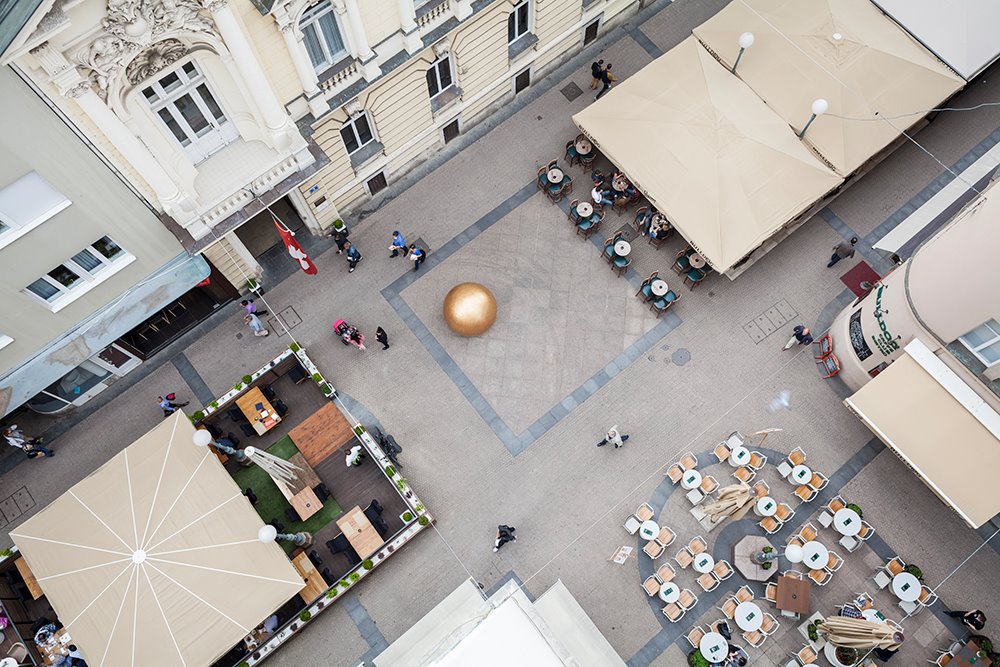 © City of Zagreb Tourist Board
© City of Zagreb Tourist Board
Over several years, the monument acquired significant scars. Stickers, graffiti and deep gouges, cut by keys or other implements, covered its surface. Such additions were perhaps the easiest way for the least remarkable people to actually leave a mark in the city – a sad admission of underachievement expressed in a desperate act to create permanence.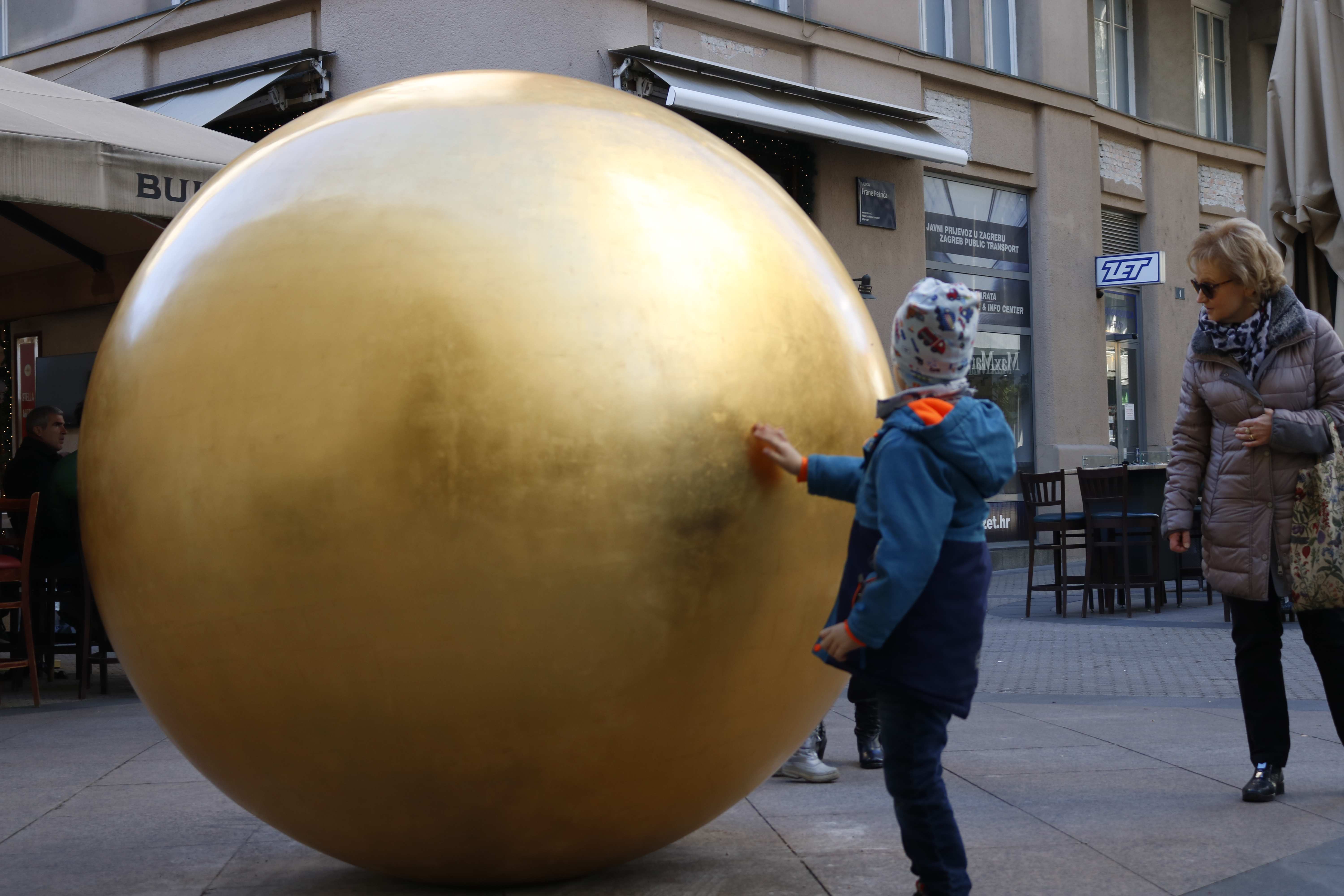
Damir Ujević, the restorer of the piece, has appealed to city residents to allow Ivan Kožarić's Grounded Sun to remain unscathed now the monument has come back. Although the original artist, the sadly deceased Ivan Kožarić, said he didn't mind the interaction with his work, it's easy to appreciate Ujević's plea. Grounded Sun looks glorious upon its return. Its golden glow now draws lingering glances from all who pass. People stop to take photos. Children can't help but want to touch it.
Josip Kozarić's Grounded Sun was first introduced to Zagreb city centre back in 1971. Its first home was on the Republic of Croatia Square (back then known as Maršal Tito square). Over the course of three decades, and several changes of address, it became a much-loved fixture of Zagreb centre. So much so, that it was decided that an entire solar system be built to accompany it.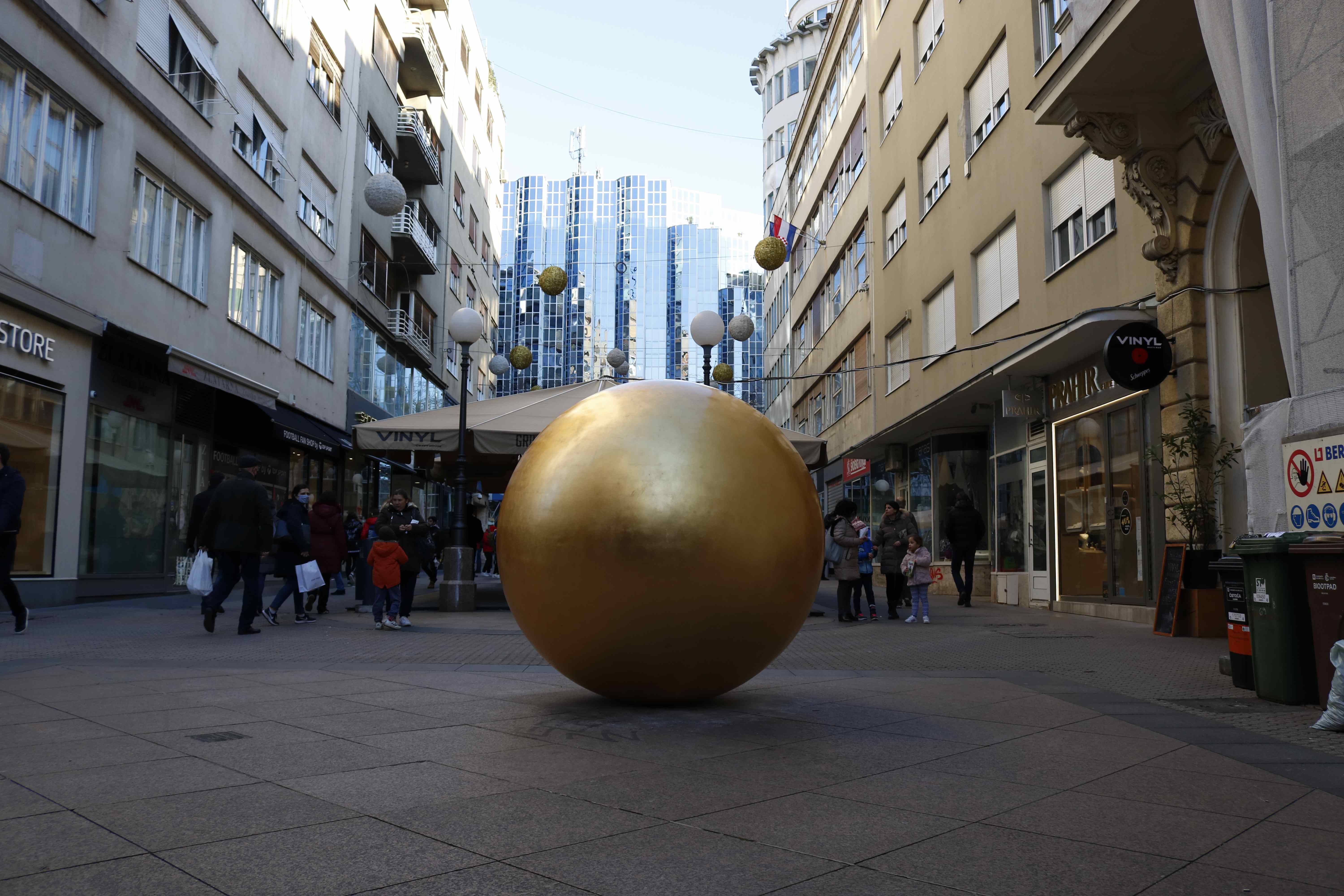
Using the scale of Kozarić's Grounded Sun as a base, artist Davor Preis created monuments of each other planet in our solar system. Kozarić's Grounded Sun's had been moved to the heart of the city centre in 1994. In his accompanying Nine Views installation from 2004, Preis placed each other planet around it to scale. Mercury sits in nearby Margaretska, Venus on Ban Josip Jelačić square, Earth lies on Varšavska, Mars can be found on Tkalčićeva 21 and the furthest neighbour, Neptune, is way out of the city centre, in the south-east Kozari suburb.
You easily can visit all of the Zagreb planet monuments in one day. It's perhaps the quickest way to journey around our solar system. But, none of the other planets resonates with the same glow as Kozarić's Grounded Sun on Bogoviceva. Its welcome return adds an extra highlight to Špica. Maybe this winter now won't feel so cold in the shadows of Bogoviceva with the restoration of the sun.
All uncredited photos © Marc Rowlands
A map of where to find all of the planets of our solar system on the streets of Zagreb
Zagreb Trams - Iconic and Integral to Life in Croatia's Capital
November 20, 2020 – Today is the 20th anniversary of the completion of the Zagreb trams network. Namely, on this day in 2000, the last current line from Jarun to Prečko was opened. To celebrate, we take a look at the iconic, blue trams of Zagreb
It's all too easy to take for granted the things you see every day. That's certainly true of city residents in their feelings for Zagreb trams. As it currently stands, the Zagreb trams network was completed on 20th November 2000, when the existing line to Jarun was further extended to Prečko, which lies to the west of the city centre. In the two decades that have followed, Zagreb trams have cemented their place as an icon of the city, have helped changed the cityscape of Zagreb and have facilitated the friendships, education, careers, relationships and businesses of the Croatian capital over millions of journeys. All without much fanfare or celebration.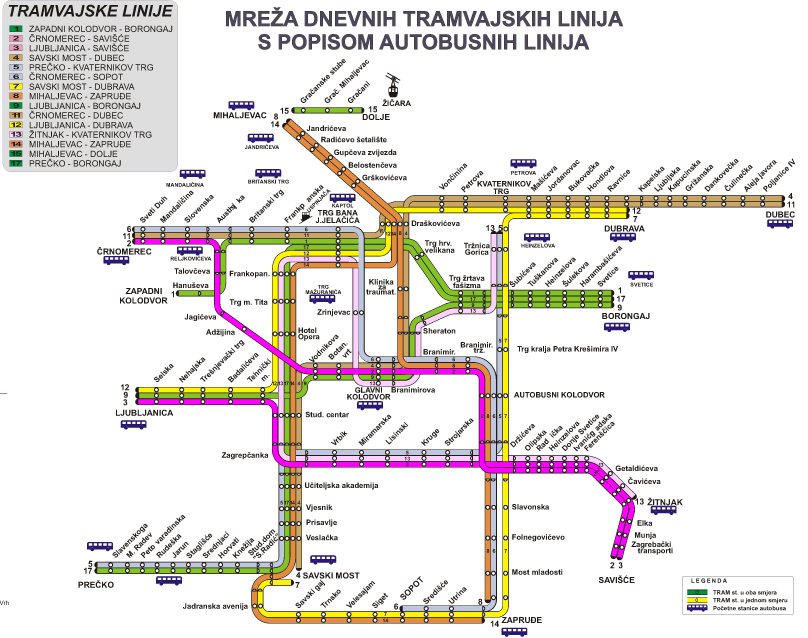 The Zagreb trams network
The Zagreb trams network
The Zagreb trams network consists of 15 lines which connect suburbs as far west from the centre as Prečko (8 kilomtres), as far east as Dubec (8 kilometres), north to Mihaljevac (3 kilometres) and south to Avenue Dubrovnik in Novi Zagreb (an additional line, running further south to Velika Gorica, servicing Zagreb Franjo Tudman airport, is planned). Throughout the night, four lines remain, connecting essential workers, night-time workers and late-night revellers (although they are sometimes replaced by night buses due to maintenance works).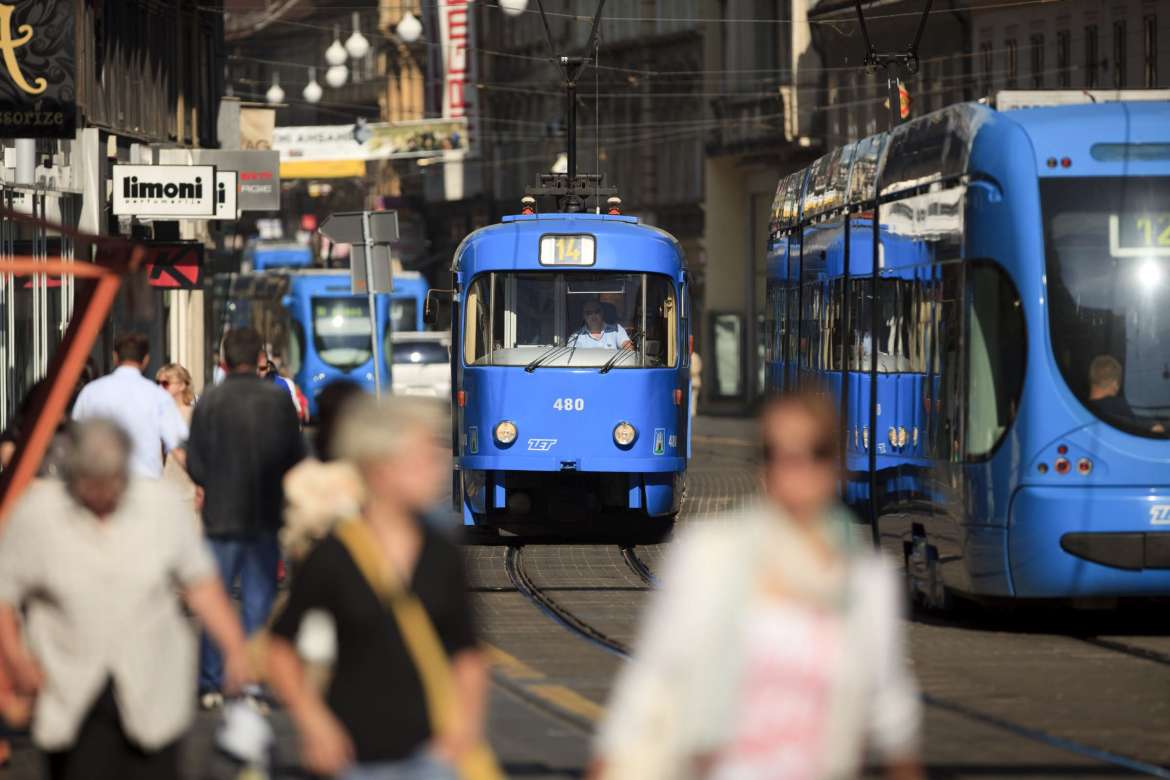 © Romulić & Stojčić
© Romulić & Stojčić
The completion of the line to Prečko catalysed the expansion of the westerly-lying suburbs of Špansko and Prečko. The change visited upon the rest of the city by the Zagreb trams network has been no less fundamental. Certainly, at weekends, Zagreb can confidently claim to be a 24-hour city because of its trams. Day or night, no place within the city suburbs is too far to reach because of Zagreb trams.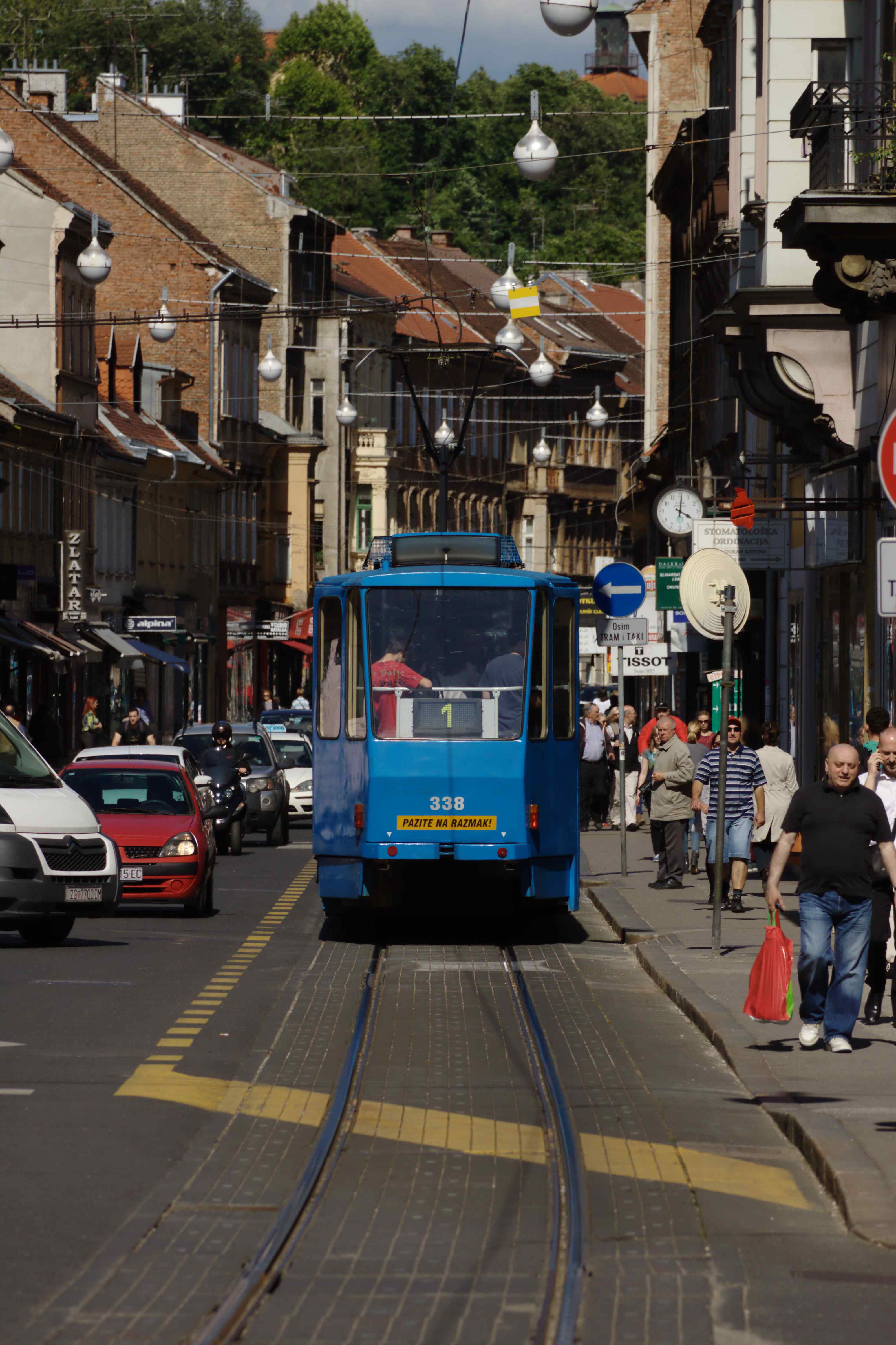 © Aktron / Wikimedia Commons
© Aktron / Wikimedia Commons
So reliable and well used are Zagreb trams that it's perhaps understandable why they are sometimes taken for granted. Whole generations now living in the city do not even know a Zagreb without a tram network. Its importance to all was put into sharp focus during the early part of 2020 when the Zagreb trams network was temporarily closed in response to the COVID-19 pandemic. Perhaps only then was the true scale of integration between Zagreb trams and the lives of city residents truly recognised. 'You don't know what you've got 'til it's gone.'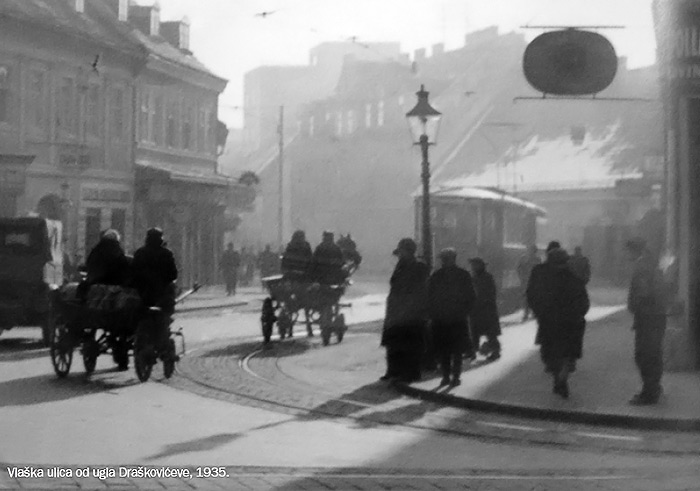 Zagreb trams on the corner of Vlaška and Draškovićeva streets in 1935 © Public domain
Zagreb trams on the corner of Vlaška and Draškovićeva streets in 1935 © Public domain
Lest we forget to give credit where credit is due, here are some interesting facts about Zagreb trams.
The Zagreb trams network was started in 1891 with the opening of the first line. Back then, the trams were pulled by horses - the electric tram didn't debut in Zagreb until 1910. The first journey started at the site of today's Technical Museum and the first track ran for some 8-kilometres. So fascinated were Zagreb residents with the introduction that some 20, 000 passenger journeys were made on the second day. The population of Zagreb at the time was 40, 000.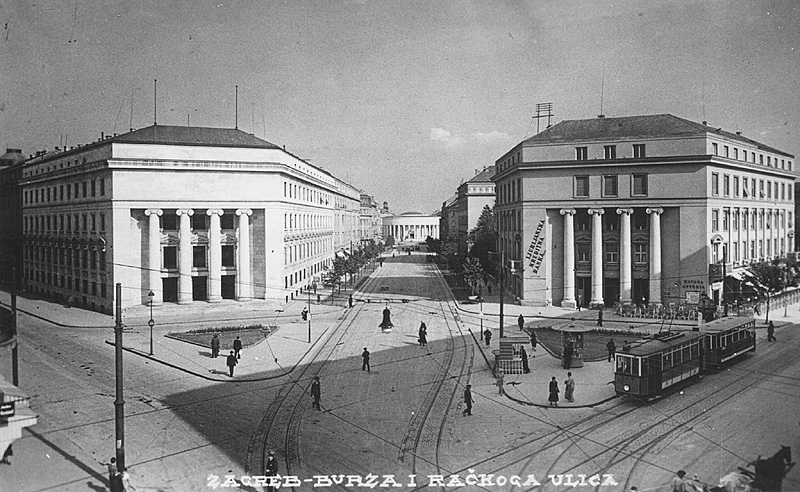 The route from Draškovićeva to Džamija in the 1930s © HappyV
The route from Draškovićeva to Džamija in the 1930s © HappyV
Osijek in Slavonia, east Croatia, was the first city in the country to have trams. The first international railway line into Croatia was built to facilitate holidays on the Kvarner coast, but the rail line ended in Rijeka. The upper echelons of Austro-Hungarian society who took this train were transported to their preferred destination – Opatija – by tram.
The most-modern low floor trams that now run in Zagreb were introduced in 2005.
There are two separate tram stations in Zagreb which have the same name – there are Heinzelova stations on the lines both to Savišće and Borongaj.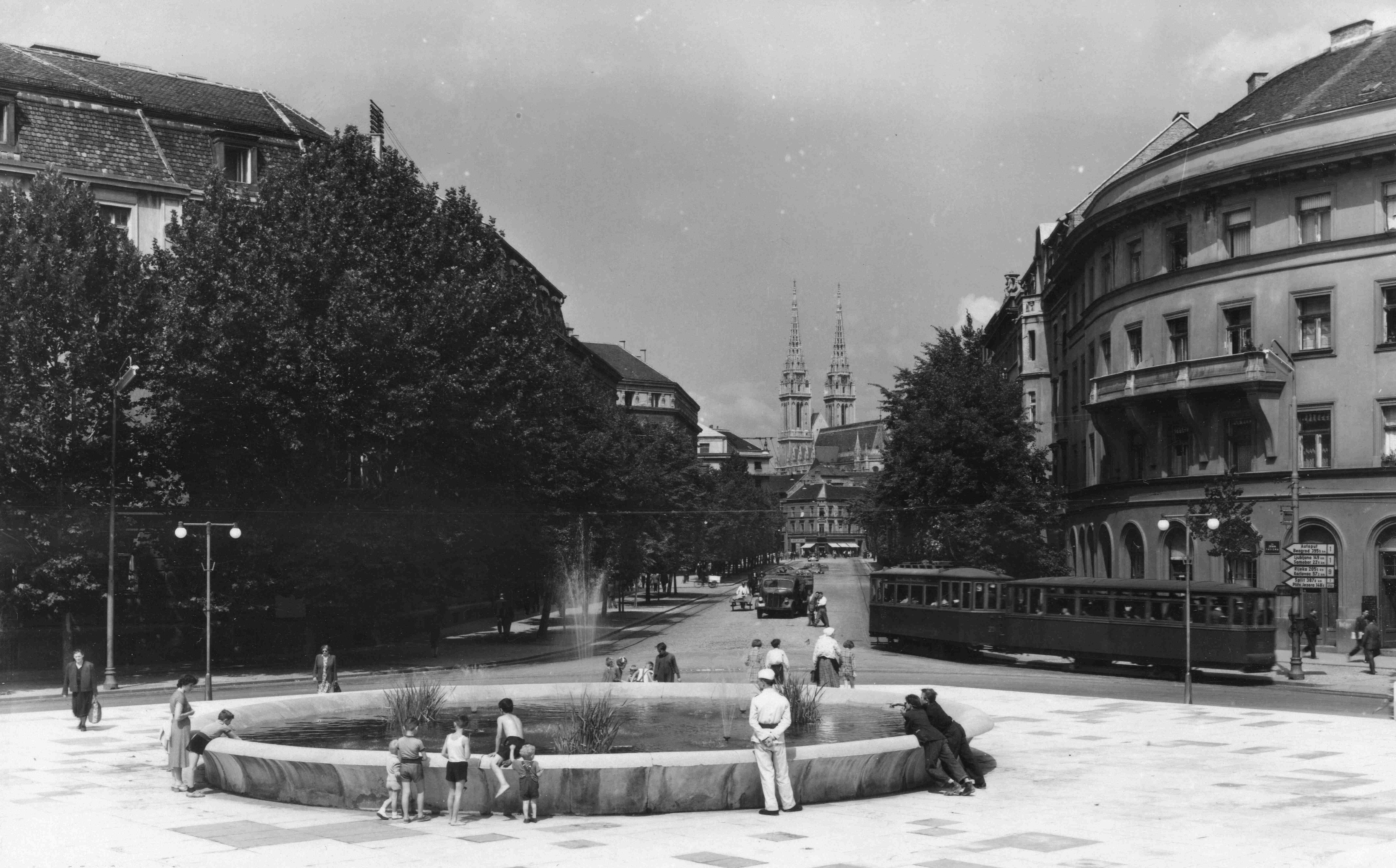 The view from Džamija up to Draškovićeva and the cathedral in 1947 © Romák Éva
The view from Džamija up to Draškovićeva and the cathedral in 1947 © Romák Éva
The Zagreb trams network has 116.3 kilometres (72.3 miles) of metre gauge track. It is the same track all over the city, except for the line which runs north to Mihaljevac, which is unique. This line is both the fastest and the shortest in the Zagreb trams network. It services some of the most desirable Zagreb suburbs in which to live. But, of course. The inclusion of the Mihaljevac line brings the track total to 120 kilometres.
Children under the age of six do not require a ticket to ride on Zagreb trams.
There are six different types of tram currently running on the network. Zagreb residents have given nicknames to different models over the years – Đuro was named after a factory that made it, Bik, meaning bull, got its name because it was stronger than older models, Čeh was named after Czechoslovakia, the country where it was produced, Katica, Genšer and Zeko meaning bunny. Everyone likes the most modern trams in summer, because they have air conditioning but, in winter, city residents greet with joy the approach of older models on their route – the seats are heated to a toasty temperature.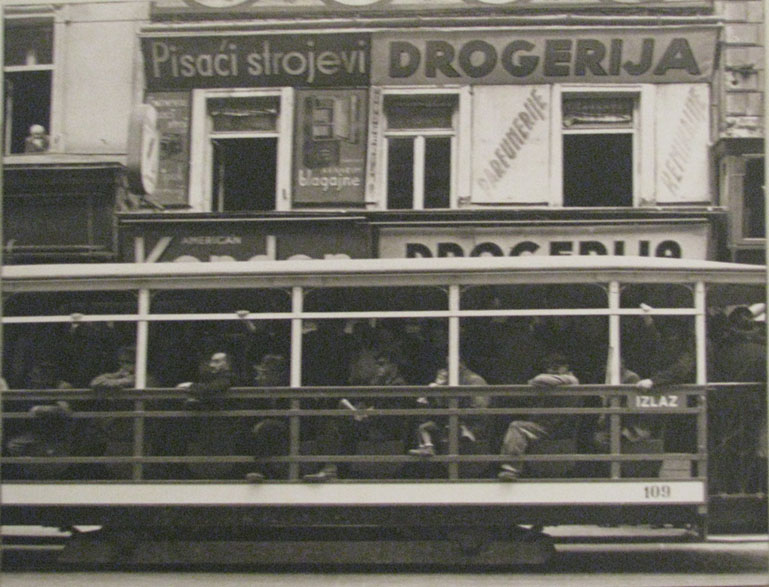 A photograph of how the open carriages of Zagreb trams used to look. The original of this photograph can be found in © Zagreb City Museum
A photograph of how the open carriages of Zagreb trams used to look. The original of this photograph can be found in © Zagreb City Museum
The longest single direction journey you can make on Zagreb trams is between Prečko in the west of the city and Dubec in the east. The journey takes around 76 minutes. You have to change tram only once to make this journey.
Apart from being the most environmentally friendly motorised public transport option in the city, the trams have massively contributed to Zagreb being a modern eco-friendly capital. Many city tram networks run down the middle of roads. While some lines in Zagreb are also placed here, many instead run at the sides of roads. This positioning – plus the way the lines sit in the road – make them problematic for cyclists. And this is partially the reason why Zagreb has 220 kilometres of dedicated cycle paths which exist not on the roads, like in other cities, but on the pavements.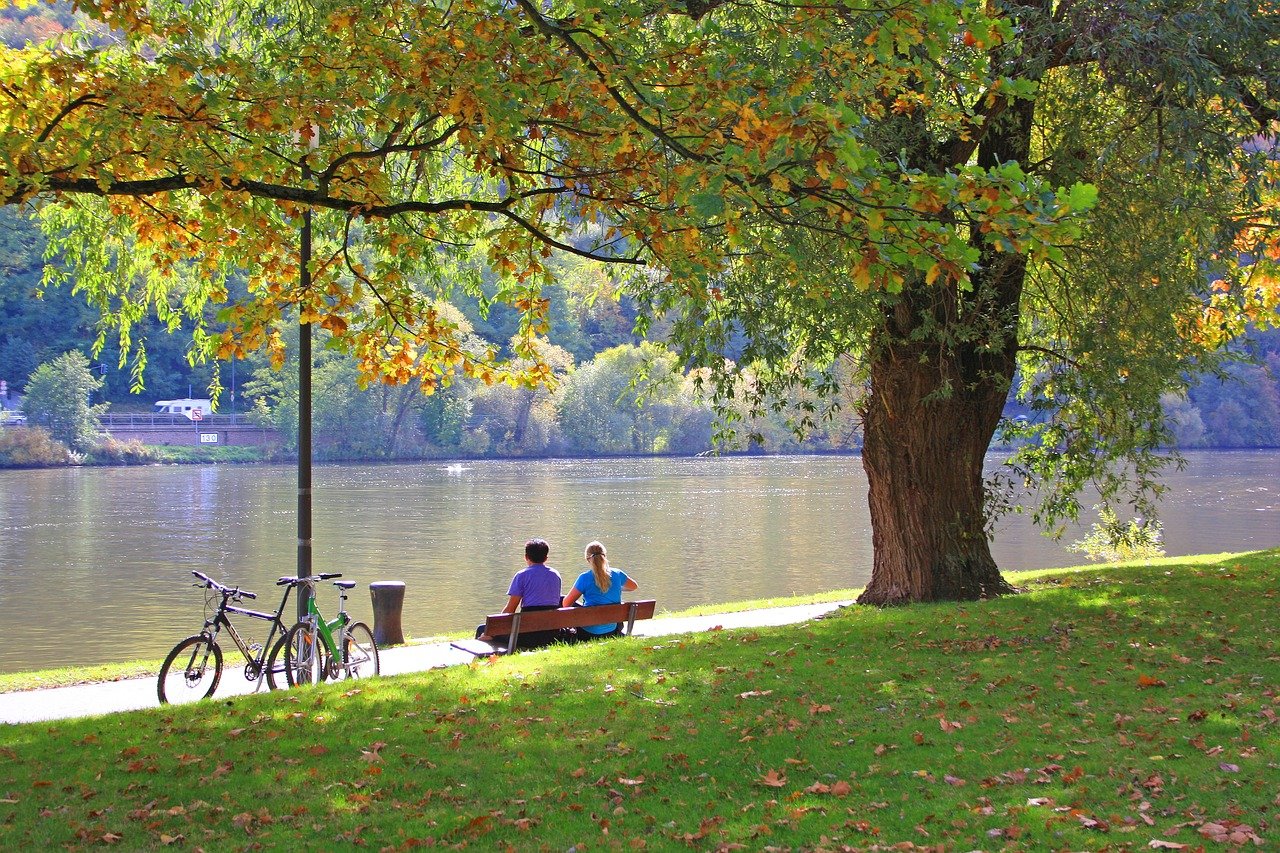 Zagreb's generous 220 kilometres of dedicated cycle paths come partially as a result of the positioning and construction materials of the Zagreb trams network © G Schneider
Zagreb's generous 220 kilometres of dedicated cycle paths come partially as a result of the positioning and construction materials of the Zagreb trams network © G Schneider
One of the world's worst tram accidents happened in 1954 on the Zagreb network. The tragedy took place on the old, steep stretch running near Mirogoj cemetery. Nineteen passengers were killed and thirty seven were severely injured.
During the day, each line runs on average every 5–10 minutes. Almost all stations on the Zagreb tram network sit on at least two lines.
Zagreb's tram network transported 204 million passengers in 2008.
A few years ago, the lowest fare tram ticket was 10 kuna. Zagreb trams were then often ridden by people without a ticket (and still are). The company who runs the tram network, ZET, decided to decrease the price of the lowest ticket to 4 kuna. Since doing so, many more people buy a ticket for Zagreb trams. You can travel for 30 minutes on any tram or trams with a 4 kuna ticket.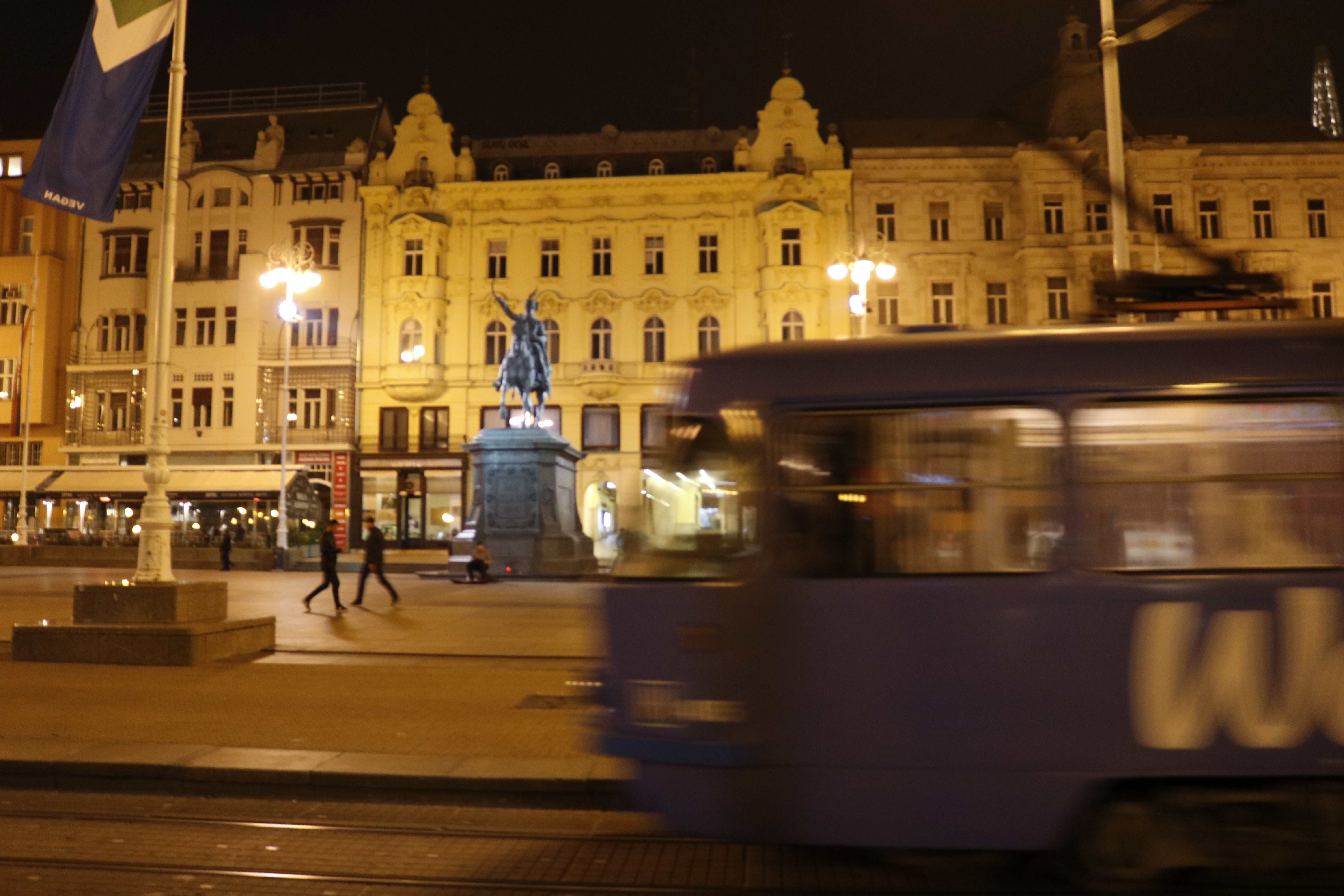 © Marc Rowlands
© Marc Rowlands
All uncredited photographs courtesy © ZET
Why French Education is Important to Croatia: Maryline Boussenard Interview
November 20, 2020 - Zagreb is full of foreigners these days and not all are involved in business or government, but also in education. Maryline Boussenard has recently arrived from France in her new role as Principal of the French International School of Zagreb. Maryline shares her thoughts on Croatia and what makes French education an asset here.
What do you like most working in an international school? What do students and parents like?
An international environment always contributes to personal enrichment. Mixing cultures, languages, and experiences abroad develops open-mindedness. For students, this will provide them an additional opportunity to integrate into higher education all over the world and to adapt to international professional settings. The Eurocampus is part of the AEFE network which brings together more than 500 countries on all continents. Students retain a sense of belonging to the same educational path and are most of the time enrolled in alumni associations.
As for the parents of our students, they value the French education system, recognize the quality of our teachers and teaching and believe their children will be well-prepared for the future by attending our school.
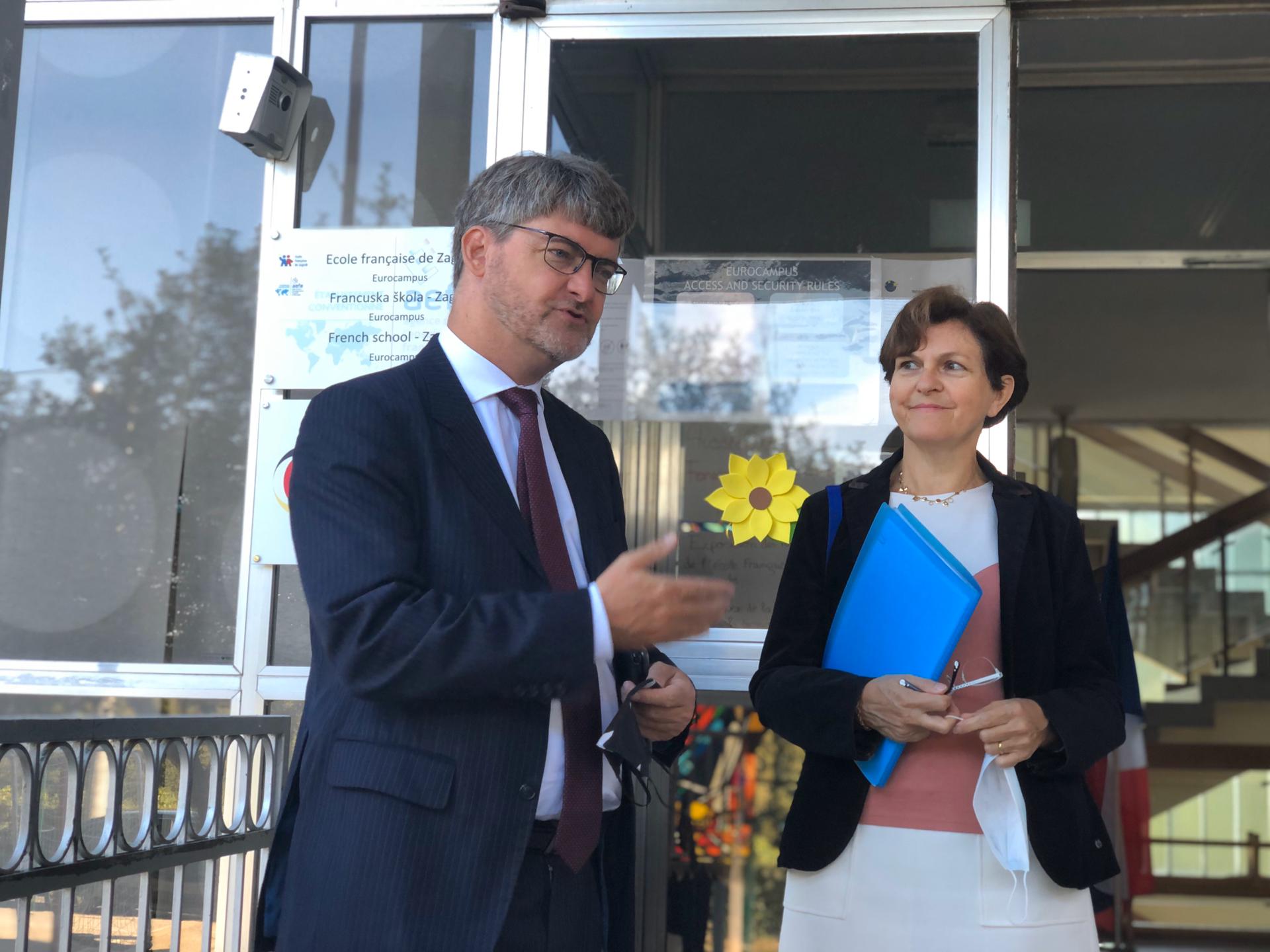
(French Ambassador to Croatia Gaël Veyssière and Maryline Boussenard)
Of all countries in which you could work, why did Croatia interest you? What is the image of Croatia in France?
I immediately accepted the job offered in Croatia on the one hand because AEFE, the Agency for French Education Abroad, represents a network that offers both a guarantee of quality of education and a possibility of orientation towards all universities in the world. On the other hand, joining a Eurocampus was also an element in favor of my choice: I practice German and I have long lived on the German border. The French International School of Zagreb participates in the development of Franco-German friendship relations and the bicultural characteristic of our establishment is an additional asset for the education of our students.
I came to know Croatia as a tourist, but it is by working and living abroad that you really know and understand a people and their history. I also have some Polish origins so I am familiar with Slavic culture.
In France, Croatia has become a country that has experienced more and more success as a tourist destination. French people appreciate its unspoiled nature, its rich and diverse landscapes, a good quality of life and the warm welcome and generosity of its people.
What is unique about French education?
First of all, the French education system is based on republican values stemming from its history: freedom, equality, secularism and fraternity. These values are enshrined in the Education Code and are national. Teachings and educational activities in the fields of citizenship and health are also carriers of these values. Schools therefore have a dual role: transmitting knowledge and training enlightened, free and responsible future citizens.
Who are your students?
Our student body is made up of a very diverse set of children from approximately 25 countries. In fact, only about a third are native speakers of French. A growing number of Croatian children are part of our school community.
What are your impressions of Zagreb so far?
I was immediately won over by Zagreb: a capital on a human scale, green and lively. Social diversity is present everywhere and there is a feeling of security (and it is also a reality). Ideally located geographically (mountain and sea at reasonable distances), it represents in my eyes a perfect balance between culture and nature and I feel home here.
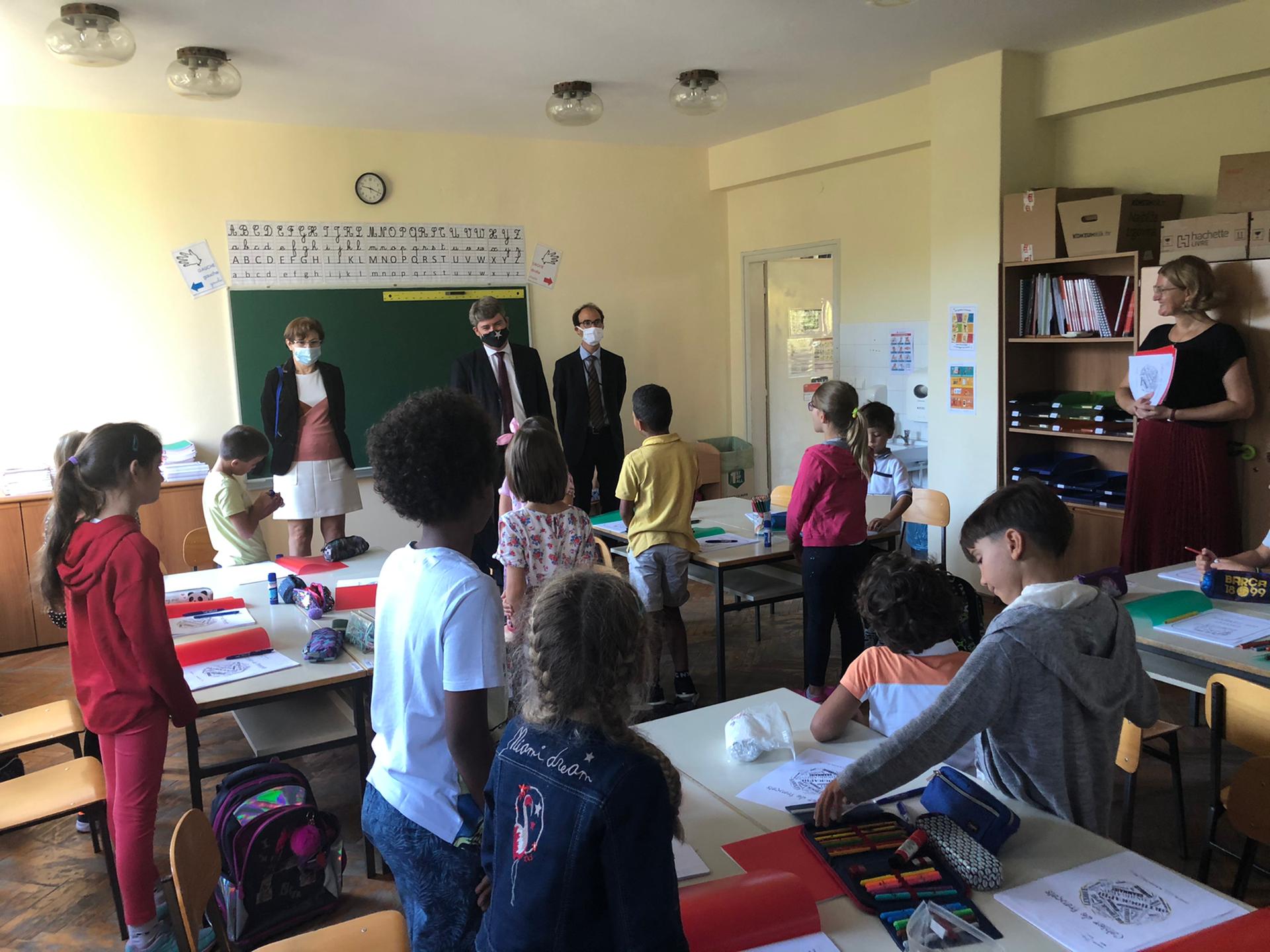
(First day of school year 2020 at the French International School (Maryline Boussenard, Ambassador Veyssière, Guillaume Colin and children of the 2nd Grade Class).)
What are your impressions of Croatian food and wine?
Croats can be proud of their products, of their cuisine, and they are right; their terroir offers an incredible diversity of products from the land and the sea. There are some very good wines and I am fully satisfied to be able to consume local products.
What are some of your personal and professional aspirations while in Croatia?
Professionally, my dearest wish is to see the Eurocampus evolve and that the French School becomes an even more attractive option for families in Zagreb. The quality of the teaching provided by competent and motivated teams, the excellent school climate, the dynamics of the partnership with the German school and the links with the French Embassy make them undeniable assets for our school and it is with pleasure and conviction that I carry out my missions daily.
Personally, expatriation offers a huge chance to get to know a people, a history, and a language in a deeper way than through tourist travel alone. I was fortunate enough to have an education that was open-minded and without prejudice.
I therefore completely share the spirit of openness and the ability to adapt to other cultures that contributes to the excellence of the schools in the AEFE network.
For more news on life in Croatia, follow the TCN Lifestyle section.
Flights to Croatia: LOT Regularly Operates to Zagreb in December
November 19, 2020 - The latest news for flights to Croatia as LOT regularly operates to Zagreb in December this year.
Croatian Aviation reports that Polish national airline LOT has announced its flight schedule for December. There will be only one active line to Croatia, between Warsaw and Zagreb.
LOT's winter flight schedule in 2019 operated on the Warsaw - Dubrovnik line. However, this year, that line will not be in operation. As confirmed to Croatian Aviation by the Polish airline, there was an option of direct flights to Dubrovnik during the Christmas and New Year holidays, but due to the spread of the pandemic, the line will remain out of service.
LOT will thus maintain their presence on the Croatian market with one line, operating between the capitals of Poland and Croatia, Warsaw and Zagreb.
The airline will not increase the number of weekly flights on this route from mid-December, as is the case with many airlines, and one more flight per week is available only between December 7 and 12.
In the first week of December, LOT will operate to Zagreb on Mondays, Wednesdays, Thursdays, and Fridays, and in the second week, additionally on Saturdays.
In the last two weeks of December, four flights a week have also been announced. Depending on the day, departures are available in the morning and afternoon.
LOT has significantly increased the number of routes to Croatia in this year's summer flight schedule and plans to operate on them next year as well. We will have to wait until January for the final confirmation of the flight schedule for the summer of 2021. Still, the number of Polish tourists in Croatia was relatively high even in the season behind us, marked by a global pandemic and declining demand in tourism and transport.
For the latest travel info, bookmark our main travel info article, which is updated daily.
Read the Croatian Travel Update in your language - now available in 24 languages.
HNS Executive Director Marijan Kustic Says Croatia Will No Longer Play at Maksimir
November 16, 2020 - Croatia will no longer play at Maksimir Stadium in Zagreb, confirmed the executive director of the Croatian Football Federation (HNS), Marijan Kustic.
Index.hr reports that this is even though Dinamo started repairing the south stand, which was destroyed in the earthquake.
Recall, there was room for the national team at Maksimir in reduced capacity during the coronavirus pandemic. Still, when the spectators return to the stands, the national team will no longer play at the infamous Zagreb stadium.
"We do not want to question at all that our national team, 2018 World Cup finalists, must have an adequate stadium in the capital. Maksimir is no longer an adequate stadium for the World Cup finalists. The city of Zagreb must give answers to Dinamo and finally find a solution and take action to build a new one. It would be inappropriate for the capital and a club like GNK Dinamo to have such a dilapidated stadium," Kustic said, noting that there are many countries that are neither at the economic nor football level of Croatia, but have better stadiums.
Kustic mentioned that the spectators are a priority for HNS and that they do not have adequate conditions at Maksimir. In Rijeka, Pula, Varazdin, Osijek, and Split, the situation is different, so the national team will play there in the future until the situation in Zagreb is resolved.
According to a rough estimate, more than a billion kuna has been pumped into Maksimir so far. That is why the Croatian Football Federation launched the idea of building a national stadium.
"We want the national team to play all over Croatia, but the stadium in Zagreb is no longer comfortable, half of the stands are not working, everything is closed and depressing. After the earthquake, the situation worsened; we don't know if it is safe. My personal opinion is that the national team's time at Maksimir has passed," Miskovic said.
The national team does not want to play at the stadium either, and in October, after the match against Sweden, Zenit stopper Dejan Lovren spoke about it publicly.
"All the national teams are surprised that we were second in the world, and we have such conditions. Two or three thousand people came to the match against Sweden at the ugliest stadium in Europe. People didn't have umbrellas, they were rained on, and I wanted to shake everyone's hand. It is inadmissible for a national team like ours, which promoted Croatia in the best possible way, to come here and rightly listen to the Sweden coach's insults. Obviously, some priorities in this country are not right. Some priorities, such as the cable car, are irrelevant. I think that hospitals, kindergartens, and schools should be built first, and then maybe a stadium, but we are not looking for that for ourselves, but for the people who come to watch us. I think we will wake up only when Serbia makes a national stadium," Lovren said at the time.
After the national team campaign in October, coach Zlatko Dalic was also clear about using Maksimir stadium for national team matches.
"I don't know what else to say about it. I've been talking for two years; others have been talking for a decade. Maybe we shouldn't talk anymore but cut and say we won't play there. We keep saying it's not a stadium for the national team, and we keep coming. Maybe HNS should say it a lot; we don't play there anymore, although it would be inconvenient to avoid a city again when hosting the national team," said Dalic.
In October, Croatia last played in Zagreb in the Nations League matches against Sweden (2:1) and France (1:2), when a third of the stadium's capacity was open. The only match in November that will be played at home, against Portugal, will be at Poljud on Tuesday.
To read more about sport in Croatia, follow TCN's dedicated page.
Ćešho Vopi? A Linguistic and Historical Guide to Šatro
November 12, 2020 - Šatro: bačkizagre skisvinj tinskila! itsyay ikelay igpay atinlay!
Picture the scene. You are in Zagreb and you meet a group of locals. You befriend them and start to hang out with them for the next week or two during your stay. You are as fluent as a dried-up lake in Croatian, but naturally, you start to grab a word or two by hanging out with these local purgers (nickname for people from Zagreb). 'Dajte nam molim pivo' (please give us beer), 'Kužim te' (I understand you) and other necessary phrases are captured in your mind as you realize they are essential. 'Hoćeš pivo?', asked you your Croatian friend that offered to buy your second round and you replied with 'Da!' (Yes) because as you learned by now, it's hard to decline such an offer. You finish the beer and another friend, seeing your mug/bottle empty comes to you and asks 'Ćešho vopi?' And you are confused. You only had two beers, is he already drunk? But he seems sober, are you maybe already drunk? He asked you again and you still heard the same massacred question and you probably start worrying you should be taken to a hospital. Fear not, as your friend is just messing with you and introducing you to Šatrovica.
eplacingray ethay ablesyllay orderyay
Šatrovica or Šatrovački, Šatra and Šatro is argon, a south-Slavic form of pig Latin represented in the Croatian, Serbian and Bosnian languages. It is mainly represented in Ex-Yu capitals (Zagreb, Belgrade and Sarajevo) and in Croatia, it's associated with Zagreb subcultures. It may seem odd at first, but it is fairly simple once you are fluent in Croatian, as the secret of this secret language is simply in replacing the syllable order. Dr. Ivo Žanić, professor of Croatian language and sociolinguistics for journalists at the Faculty of Political Science on Zagreb University pointed out, when I asked him about Šatrovica, that I perceive it in my question as slang. However, he says, there are two ways to look at Šatrovica.
‘It's useful to distinguish Šatrovica as a lingual practice of marginal groups (such as drug addicts, drug dealers, prisoners, pimps and prostitutes) and as slang for certain age and subculture (students, ravers, bikers, football fans, etc)’, said Žanić. He also stated that the two differences overlap at times. When asked why Šatrovica didn't catch on in other cities, Žanić said that there are many forms of slangs in other cities and while Zagreb, being the biggest and most influential city, Šatrovica is more known than other slangs (as a practice of replacing the syllable order), but not the only one. ‘Do you truly think that Daruvar's adolescents or bikers in Rovinj don't have their own slang?’, Žanić asked me. Given that Šatrovica became a matter of local patriotic pride amongst many in Zagreb, it seems Žanić made a valid point that other cities have their own slang valued to the same extent.
uncertainyay originyay
Argots such as Šatrovica, where speakers play with letters in a word are no strangers to many languages. While for modern pig Latin in English the origin can be traced as early as 1919 thanks to the singer Arthur Fields and his song ‘Pig Latin Love’ Žanić says for Šatrovica that it's impossible to trace its origin and development since it started as a vocal language. Even though you can find it in some of the Croatian novels today and much more in Croatian rap, it didn't have written track in its beginning. 'It is strictly a vocal idiom', he pointed out.
However, the scientific interest for the subject, seldom as it is, dates as early as 1979. when Željka Fink published an article in a scientific journal Wiener Slawistischer Almanach. In her scientific research, Fink tracked the words used among high schoolers in Zagreb, which were noticed and recorded in 1930's by a linguist Josef Hamm and then compared them to what was Šatrovica in 1970's. Looking at Hamm's text titled ‘Two or three words about Zagreb high-schoolers speech’ and the list of words he gave, it becomes obvious that the majority of those words are neither used nor understood by Zagreb's youth today. Other words from that period which young purgers use today, had a bit different context in 1930's slang and there wasn't any use of Šatrovica, as we know it today, given that back then (at least to Hamm's knowledge) high-schoolers didn't replace syllable order.
What's even more interesting, the title of Finks scientific research is translated to English (officially translated by Croatian scientific bibliography Crosbi) as ‘Slang in Croatia: Yesterday and Today’, while in the original Croatian title, slang is replaced with Šatrovački govor (Šatrovački speech). Such distinction in the title on the two languages underlines the uncertainty of classifying Šatrovica as a word game, a secret language (that is no longer so secretive) or as slang for youth? (or all at once, overlapping, as Žanić said). But, do people truly perceive Šatrovica as slang or do they differ the two?
oicevay ofyay ocalslay
I asked several locals from Zagreb their opinion on the differences between Zagreb's slang and Šatrovica.
Matija Šalat Zagreb born, Stenjevec raised says he doesn't use Šatro that much but has several friends who actively use it. ‘I'm not sure what would be the difference between Šatro and slang, I actually think Šatrovica can be classified as a broader part of Zagreb slang. I think it is certainly very spread amongst young people who feel very connected to Zagreb and who are proud to live here’, he concludes.
A local musician from Sopot neighborhood, Dino Saurić remembers using Šatrovica the most in high-school and at university. He pointed out, however, that it was mostly used while joking with friends, while slang is something he uses regularly and mostly in a friendly atmosphere. ‘Šatrovica is twisting out words, while slang is not twisting words but using non-formal language’, said Saurić putting an example of the word buraz (bro) instead of brat (brother). ‘Its nice to hear someone use that street talk in a normal way’, concluded Dino.
Raised in Trnsko neighborhood, Marko Medaković is an upcoming rapper who soon plans to release his hip hop material. He rarely uses Šatro and it's usually in his writing to open more space for rhyming. ‘It seems to me we use Šatro to look cool, it is more reserved for younger generations while slang words are used for easier communication’, says Marko. He adds that Šatro is mostly connected to the old school hip hop and it was especially popularised by a cult-status rap duo from Zagreb Tram 11 and newer local rap names such as Tibor.
uickqay ashcray oursecay
To conclude, Šatrovački today is a distinctive part of Zagreb's pop-culture in Croatia and it's an argot where you replace the syllable order. It is usually done by using a consonant in the middle of a word as a breaking point and then putting it at the start followed by all other letters behind it and leave the first part of the word as it was. You can, in theory, talk full sentences in Šatrovica, but locals will usually only use one word, the one they want to underline in a sentence. Also, some words are more converted to Šatrovica than others. Sometimes a vowel is replaced with a different one, so it doesn't resemble another word of a formal language (or for other unexplained reasons). Even though it was used by criminals, today its not that big of a secret and everyone (including the police) easily catches what the secret meaning is. If you are lucky enough, you could perhaps find an entire dictionary of Šatrovica, written by Tomislav Sabljak in 1981 as a nice souvenir for any of you bookworm tourists out there. In the meantime, here are some of the words, along with their meaning and sentence use examples to impress the locals you befriend while in Zagreb.
Ćešho = hoćeš (want) – Ćešho ići na koncert? (Do you want to go to the concert?)
Čašpri = pričaš (you talk) – Čašpri dobru Šatru (you talk good Šatro)
Lahva= hvala (thank you) – Lahva kaj si me pričekao (thanks for waiting for me)
Vopi = pivo (beer) – Daj mi vopi (give me beer)
Vugla= glava (head) – Ne idem van, boli me vugla (I'm not going out, my head hurts)
Mado = doma (home) – Umoran sam, idem mado (I'm tired, I'm going home)
Vutra = trava (weed) – Je li u Hrvatskoj legalna vutra? (Is weed legal in Croatia?)
Đido = dođi (come) – Đido na kavu (Come for coffee)
Trasu = sutra (tommorow) – Vidimo se trasu (see you tommorow)
Brodo = dobro (well) – Nije mi brodo (I'm not well)
Žišku = kužiš (understand) – ti žišku kaj ovaj priča? (Do you understand what this guy is saying?)
No Worries, You Can Now Leave Your Greenery at Djardin Hotel For Plants in Zagreb!
November 12, 2020 - When you think of an international hotel, what pops into your mind is probably vacation in a luxurious room with a jacuzzi. However, Zagreb recently received a brand new cool place - the first hotel for plants called Djardin! It is a project initiated by the awarded Croatian designer Marita Bonačić, the winner of numerous world awards, among which Red Dot stands out.
"So, you bring the plant, we register it and record the condition (there are conditions in which we cannot receive the plant because, for example, there are pests and it is dangerous for roommates), but if the examination is successful, you will receive a confirmation and we will keep it for a certain fee, and caress it until you come for it", Marita explains how hotel for plants works.
Marita says that this idea came about quite spontaneously and unplanned because customers complained that their plants were dying because of inadequate care and ignorance, but also that they had no one to leave them with when they were on vacation, which is why they avoid decorating their home with greenery. Except on vacation, you can bring the plants for inspection or transplantation, but you can also buy some new ones.
"We offer outdoor plants, indoor plants, cut flowers, jars, exterior and interior decoration services for plants, plant maintenance services, transplants, storage, ie hotel for plants, plant rental and thematic workshops", Marita adds.
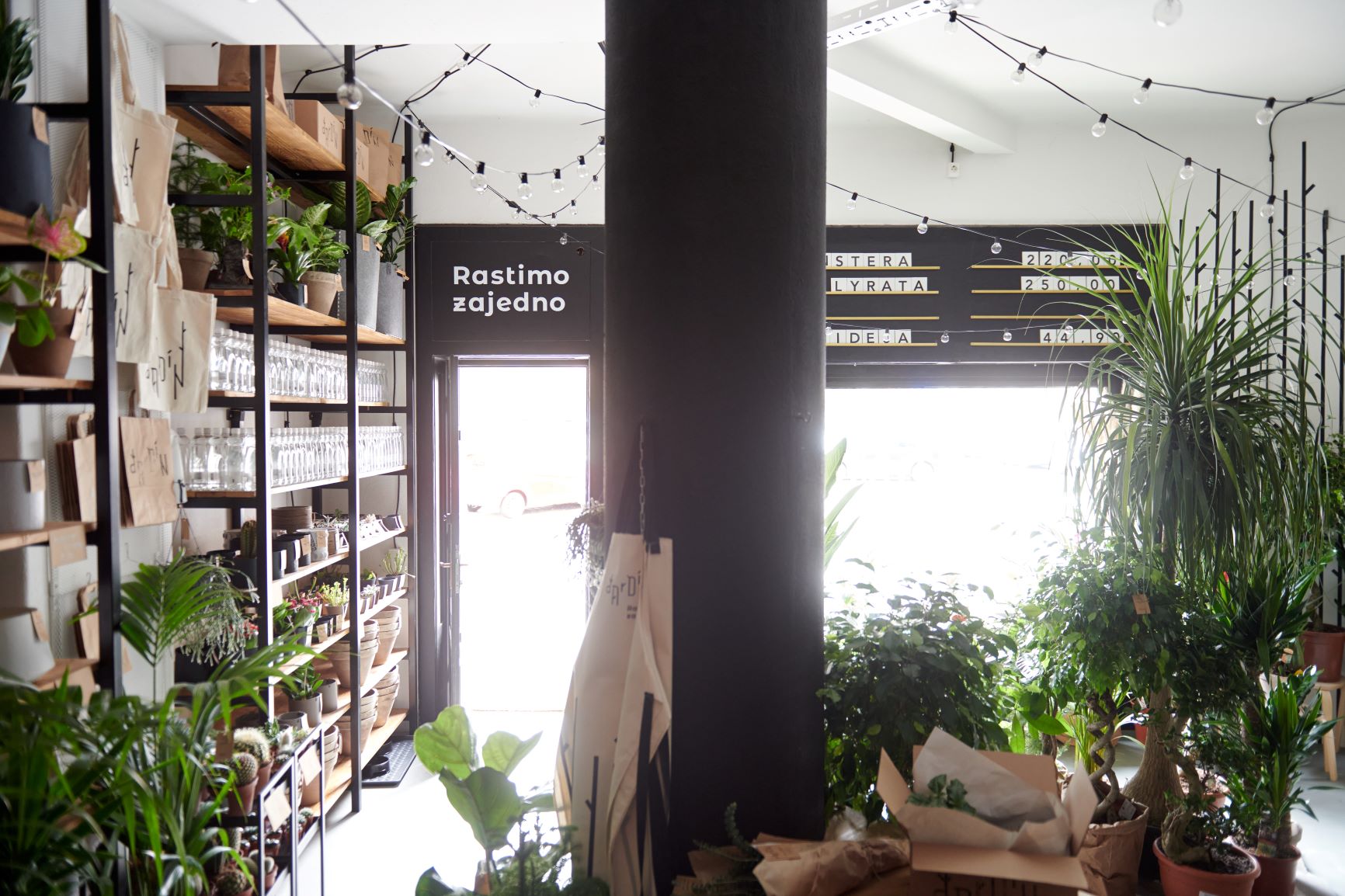
In addition to the above, there is also a walk-in Garden option. This means you can walk through Djardin even with your pet, enjoy the beautiful green oasis, read or hang out over coffee or tea.
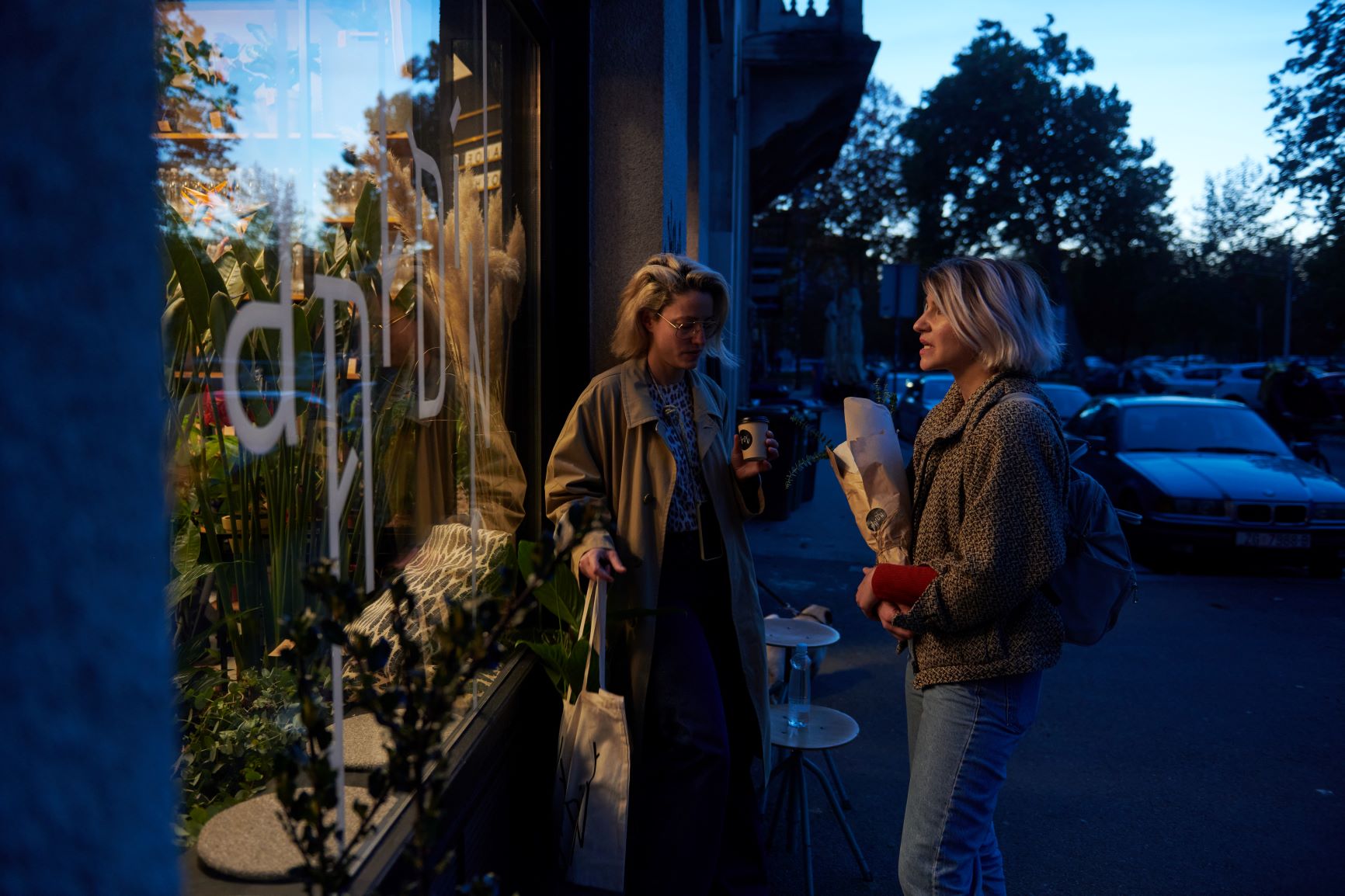
The organizers also plan to launch interesting educational workshops in which those who know a lot about plants and those who know little but share a love for plants and a willingness to learn, will be able to participate.
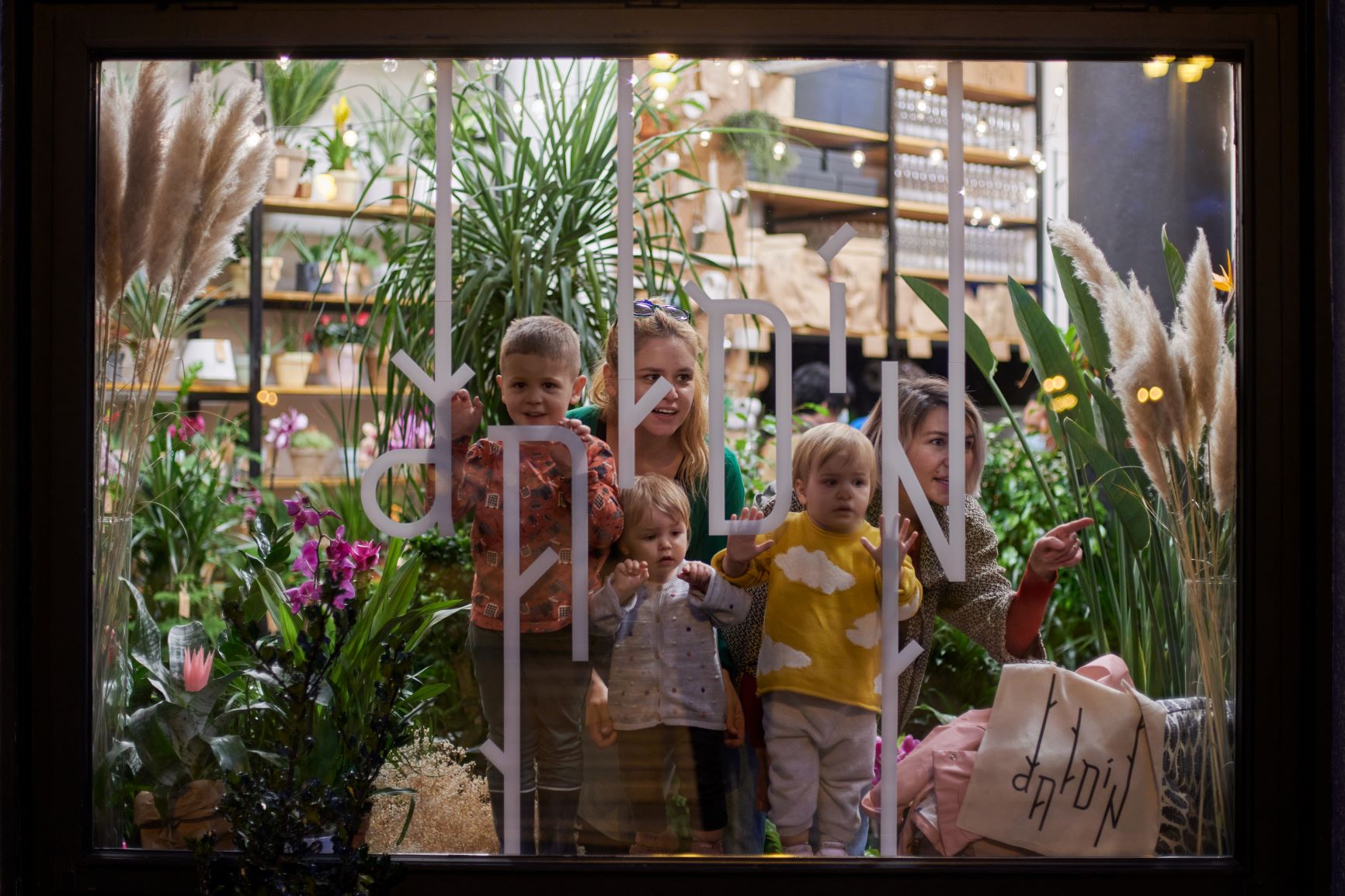
Asked if they are guided by eco-policy in their work, Marita claims that it is difficult to be zero-waste when the system is not ready for it yet, but she claims that they use sustainable materials in their work and encourage recycling and reuse.
"Our opinion is that plants love everyone equally and unconditionally, it’s just a matter of how to learn to give it back to them. We believe that really everyone can and should be the owner of the plant and the whole jungle of plants - we should be aware that those with 'green thumbs' weren't born that way, but developed an interest and got to know the plants. If you want to go that way, you can start by walking through our Djardin", Marita concludes.
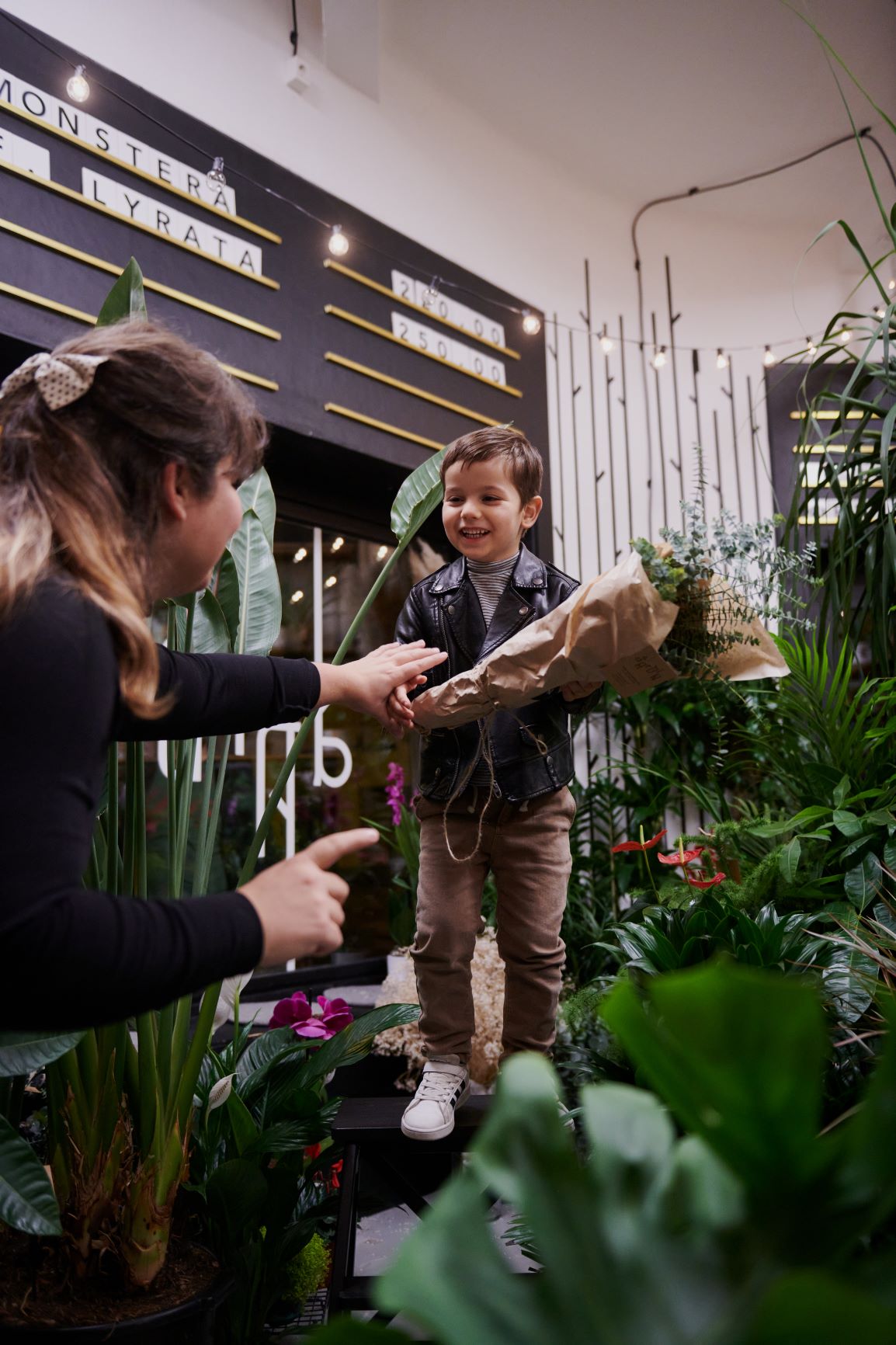
All photos © Nikola Zelmanović
For the latest travel info, bookmark our main travel info article, which is updated daily.
Read the Croatian Travel Update in your language - now available in 24 languages
Join the Total Croatia Travel INFO Viber community.
Zagreb Advent 2020 Presented: Festive Program Adapted to Epidemiological Measures
November 10, 2020 - The Zagreb Advent 2020 event was presented in the capital on Tuesday. The festive program will boast three exciting projects and all events held per epidemiological measures.
Without an ice skating rink, but with several concerts and events, Zagreb Advent will still be held this year.
HRTurizam reports that under the slogan "Advent in Zagreb, feel the light" the event will begin on November 28, and the program will include numerous cultural events and ten different festivals.
Three new projects
At the press conference, the Zagreb Tourist Board director, Martina Bienenfeld, presented three new projects.
The first of them is the Light of Zagreb, in which the windows in the Upper Town will be decorated and lit. The Tourist Board invites all citizens of Zagreb to decorate their windows in their own way and symbolically join the project.
The second project is a walk through Zagreb's churches and their nativity scenes while adhering to epidemiological measures. The third project that is being developed and launched on November 28 is related to augmented reality, which will be found in over 20 Zagreb locations.
Details and specific dates of events, festivals, and projects will be known in a few days, and the program can be followed live and on social networks.
Advent in Zagreb, despite epidemiological restrictions, will be the venue for numerous concerts this year as well.
According to director Bienenfeld, more than 70 concerts will be held outdoors and indoors, where the number of spectators will be limited. The most significant of these concerts will be streamed on social media.
Bienenfeld announced that this year, after consultations with the city and national civil protection headquarters, there will be no recognizable Ice Park on Tomislavac. However, she emphasized that when as many as 50 Advent events in Europe have been canceled, Zagreb will continue to be recognized as an Advent destination, ensuring they adapt to the epidemiological situation and exercise responsible behavior.
Unless there are even stricter measures and restrictions on entry from other countries, she expects this tourist year to end at 30% of last year.
According to the Zagreb Craftspeople Association president, Antun Trojnar, at the traditional location - on Trg pod vurom, there will be about 15 holiday houses where craftspeople - souvenir producers will present their products.
The President of the Independent Association of Caterers, Marin Medak, explained that the City of Zagreb has enabled certain modifications in public areas, i.e., on the terraces of restaurants of sales of mulled wine, coffee, sausages and the like.
To read more about lifestyle in Croatia, follow TCN's dedicated page.
Balkan Brilliance: How Zagreb Airport Fixed Its 'Toilet Disabled' Signage Problem
November 10, 2020 - Despite the 330 million euro investment in the new Zagreb Airport terminal, it seems there was only a tiny budget for translation - and for correcting the legendary 'Toilet Disabled' signs.
It opened with great fanfare in the middle of June, 2017 - the pride of Croatia. Its capital FINALLY had a high quality, modern airport as an impressive entry point to Zagreb.
Everyone smiled, and everyone was happy, especially those involved in its construction. The cost of the new Split Airport terminal was approximately 60 million euro, slightly less than Zagreb's reported 330 million.
And then the media started taking a closer look, highlighting some embarrassing language fails, the most hilarious (embarrassing, depending on your point of view) - toilets disabled. Meant of course to point out the toilet facilities for disabled passengers, 'toilet disabled' actually means toilet out of use.
A hard thing to get wrong, and an easy thing to correct, one might think
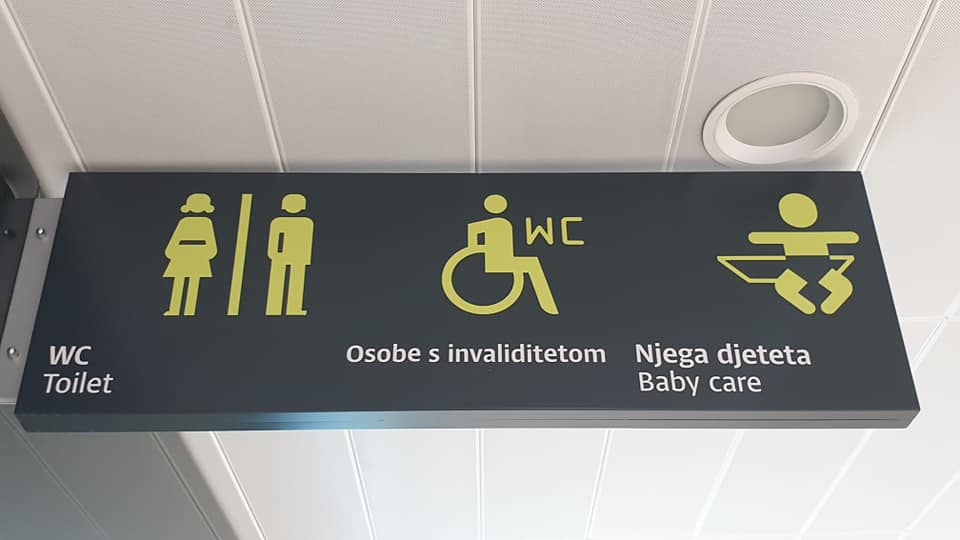
And the Zagreb Airport authorities were quick react, as you can see from the same sign above. No more embarrassing 'Toilet Disabled' anymore. In fact, nothing at all in English. The English translation was simply erased, with disabled passengers left to work things out via the picture of the Croatian version. Presumably the decision-makers were worried about the cost of an accurate translation. If a bad translator had contributed to the 330 million euro cost, how much would an accurate translation of a toilet sign cost? Much easier just to erase the whole thing.
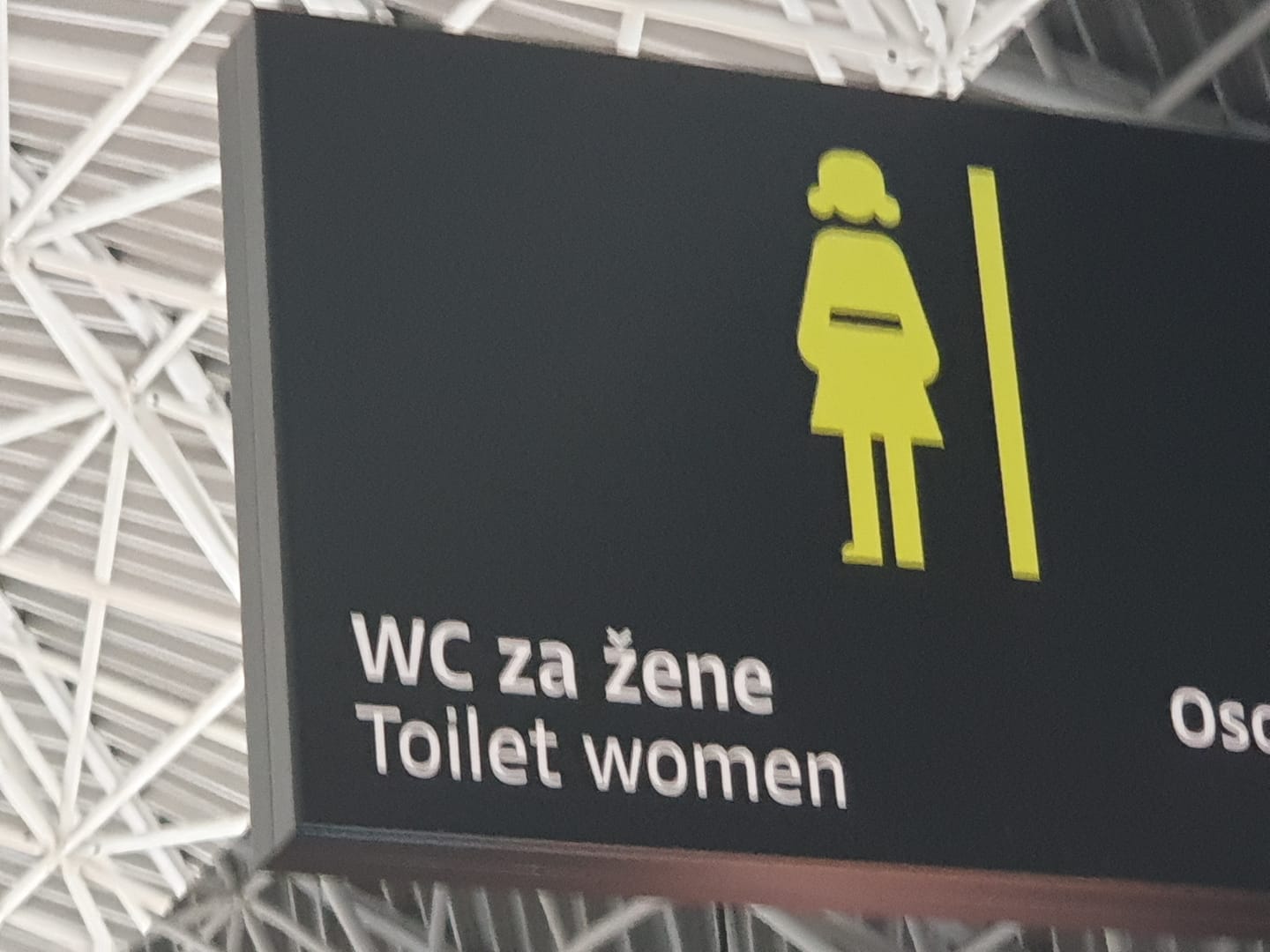
I don't fly often these days, but I passed through Zagreb Airport last December on a business trip to Berlin. I was curious to see the toilet signs, to see if there were any gems still remaining. There were.
Toilet Women.
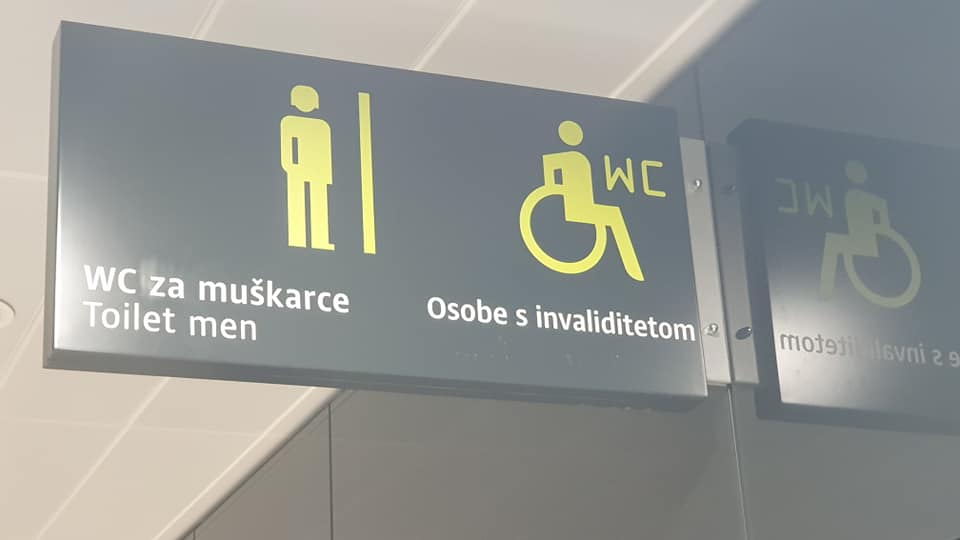
They are presumably related to Toilet Men, who exist today in English, next to the now erased Toilet Disabled. I don't know what is worse, erasing Toilet Disabled because a correct translation is too difficult, or assessing the sign to see if there were any more language fails in the only two English words which remain (there are).
Perhaps Zagreb Airport was trying to prepare its passengers for the world of Balkan brilliance and epic language fails, for this region certainly specialises in them,
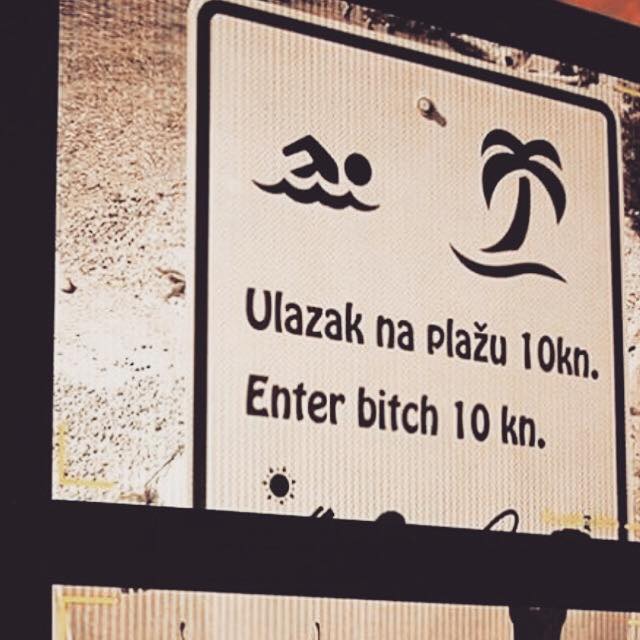
Here are some of the best in Lauren Simmonds' excellent piece - Smallpox, Diarrhoea and Free Hand Jobs: Lost in Translation in Croatia.
Filip Hrgovic Announces Zagreb Fight in December
November 10, 2020 - Croatian boxer Filip Hrgovic announces Zagreb fight in December if all goes to plan.
The best Croatian heavyweight boxer Filip Hrgovic (28), who reached his 12th professional victory with a triumph against 39-year-old American Rydell Booker, announced on his return to Zagreb that he has the opportunity to fight again this year, but that a real breakthrough in the IBF challenger rankings is expected next year when he should fight someone from the top of the world in February or March.
"It is best to be at home; I am happy to be back," said Hrgovic in a good mood and thanked everyone for welcoming him at Zagreb Airport.
"The referee made a good decision to end the fight. Booker had no control and was behind in points. He might have endured another round, but that wouldn’t make sense; he’d get even more beatings. I think I played that fight very well, and I am the first to manage to ‘finish’ him. Bulgarian Kubrat Pulev, who has twice fought for the world title, won it by a referee's decision after ten rounds," Hrgovic said.
The next fight should be on December 19 in Zagreb, but that has not been confirmed yet. The location is unknown at this time.
"It will probably be without an audience; we just need a place for the ring and cameras."
After the victory against Booker, he named the boxers he wants to fight next.
"The ones I called out, I should fight against them in February or March. But an agreement needs to be made with them. It doesn't matter who it would be, but it is important that it is an opponent from the top of the world and that it resonates worldwide. If that fight goes well, I should be among the top five on the IBF challenger rankings. Also, then next year, I could have three or four fights," said Hrgovic and added:
"Our goal is to fight for the IBF title. I may fight for the title as early as next year or 2022. But it may never be. We will have to wait to see how things develop."
Source: HRT
To read more about sport in Croatia, follow TCN's dedicated page.


